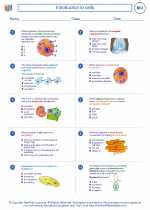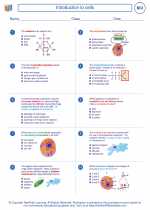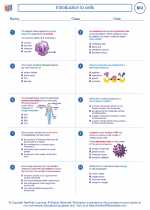Metamorphosis
Metamorphosis is a biological process through which an organism undergoes a distinct change in its form and structure during its development. This process is particularly common in insects, amphibians, and some other invertebrates. Metamorphosis can be categorized into two main types: complete metamorphosis and incomplete metamorphosis.
Complete Metamorphosis
In complete metamorphosis, the organism goes through four distinct stages: egg, larva, pupa, and adult. This type of metamorphosis is commonly observed in insects such as butterflies, moths, beetles, and flies. The stages of complete metamorphosis are as follows:
- Egg: The first stage of complete metamorphosis is the egg, which is laid by the adult insect. The egg hatches into a larva.
- Larva: The larval stage is characterized by rapid growth and development. The larva often looks very different from the adult insect and has specialized feeding structures.
- Pupa: During this stage, the larva undergoes a dramatic transformation inside a protective casing. Tissues, organs, and body structures are reorganized, and the adult insect forms inside the pupal case.
- Adult: The final stage of complete metamorphosis is the emergence of the adult insect from the pupal case. The adult is sexually mature and capable of reproduction.
Incomplete Metamorphosis
In incomplete metamorphosis, the organism goes through three stages: egg, nymph, and adult. This type of metamorphosis is observed in insects such as grasshoppers, crickets, and true bugs. The stages of incomplete metamorphosis are as follows:
- Egg: Similar to complete metamorphosis, the process begins with the egg stage, which hatches into a nymph.
- Nymph: The nymph stage resembles a miniature version of the adult insect. Nymphs undergo a series of molts, shedding their exoskeleton as they grow larger.
- Adult: The final stage is the emergence of the sexually mature adult insect from the last nymph stage.
Study Guide for Metamorphosis
To effectively study metamorphosis, it is important to understand the differences between complete and incomplete metamorphosis, the specific stages involved in each type, and the examples of organisms that undergo these processes. Additionally, it is beneficial to explore the physiological and ecological advantages of metamorphosis, as well as the evolutionary significance of this phenomenon.
Key concepts to focus on include the hormonal and genetic control of metamorphosis, the adaptive benefits of distinct life stages, and the ecological implications of metamorphosis in various taxa. It is also valuable to compare and contrast the developmental pathways of organisms undergoing complete and incomplete metamorphosis.
.◂Biology Worksheets and Study Guides High School. Introduction to cells

 Worksheet/Answer key
Worksheet/Answer key
 Worksheet/Answer key
Worksheet/Answer key
 Vocabulary/Answer key
Vocabulary/Answer key
 Vocabulary/Answer key
Vocabulary/Answer key
 Vocabulary/Answer key
Vocabulary/Answer key
 Vocabulary/Answer key
Vocabulary/Answer key
